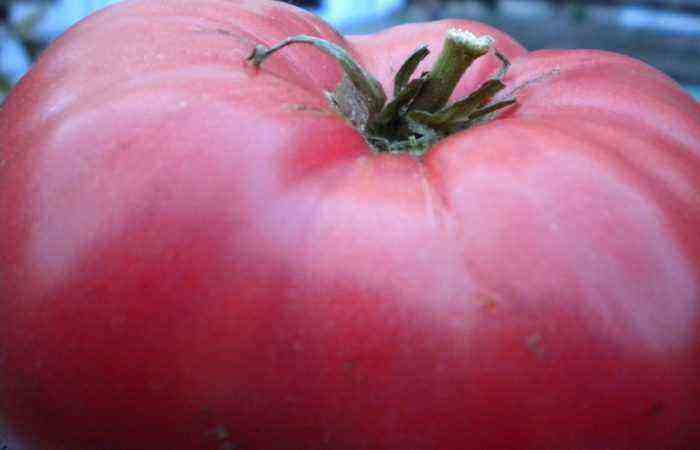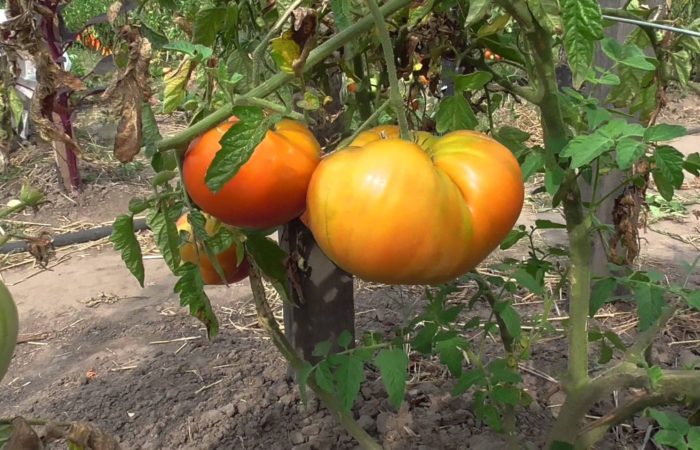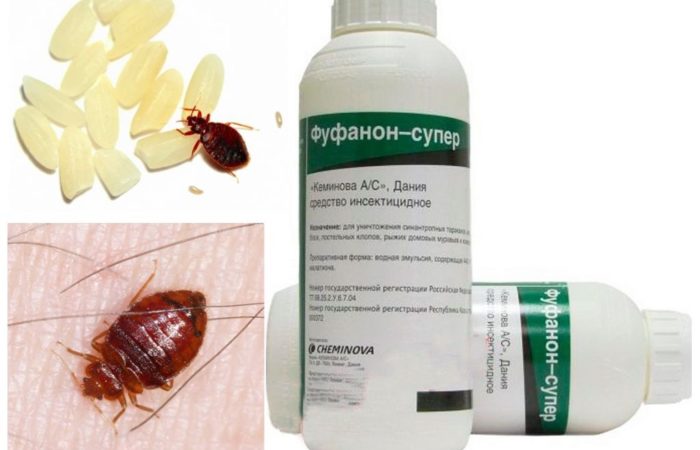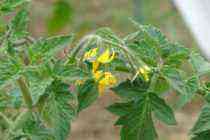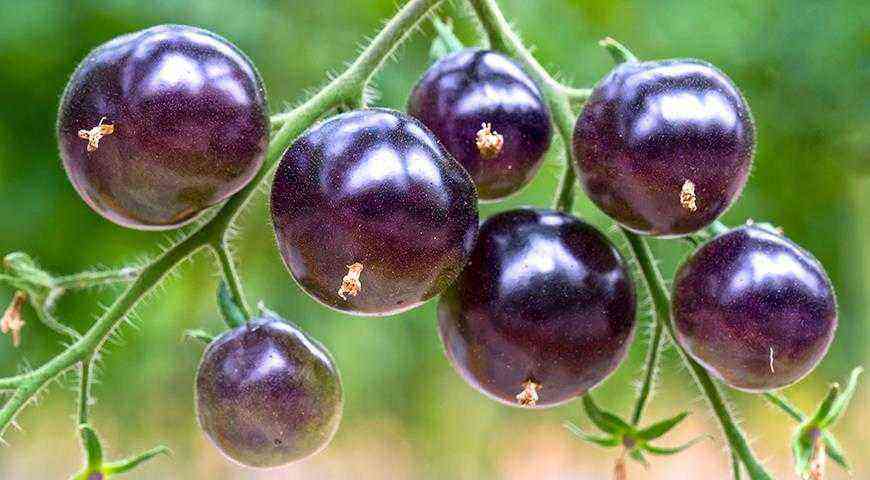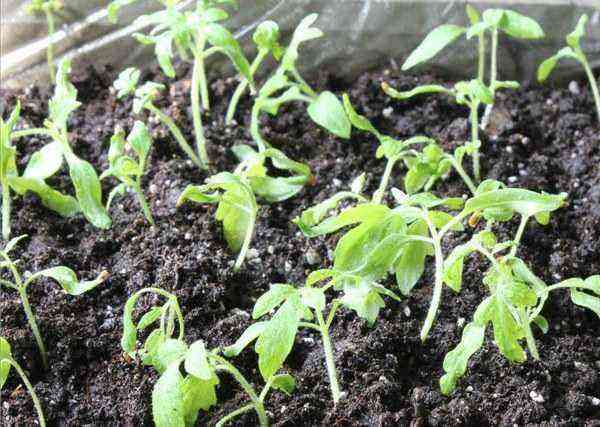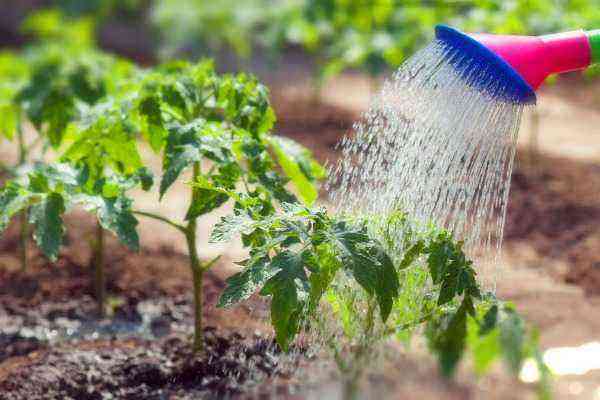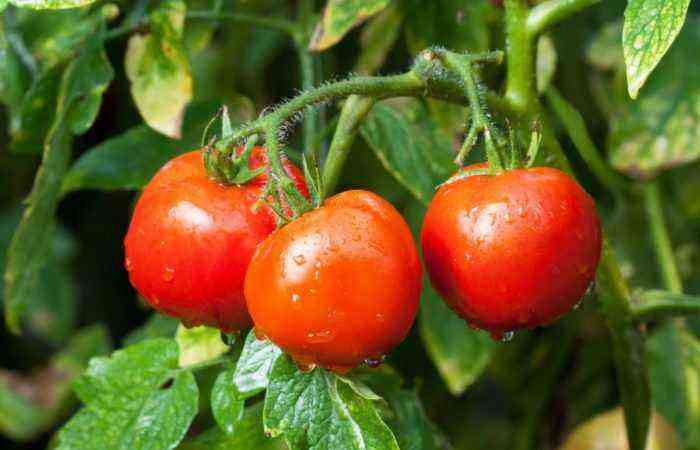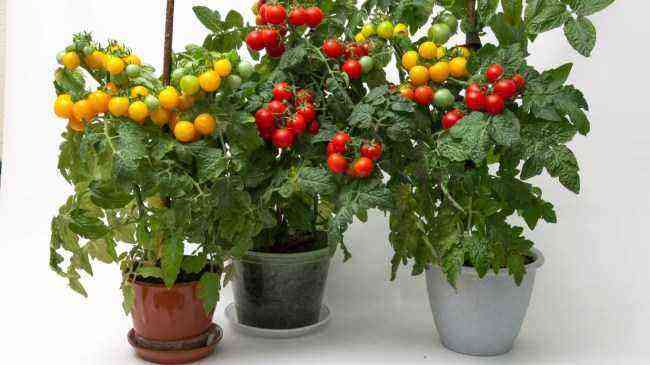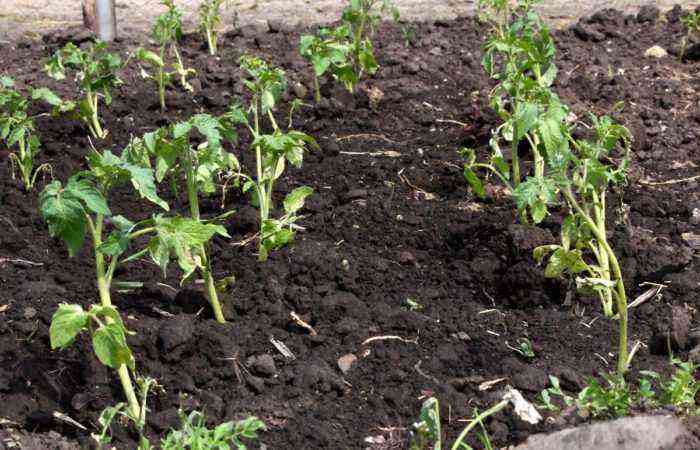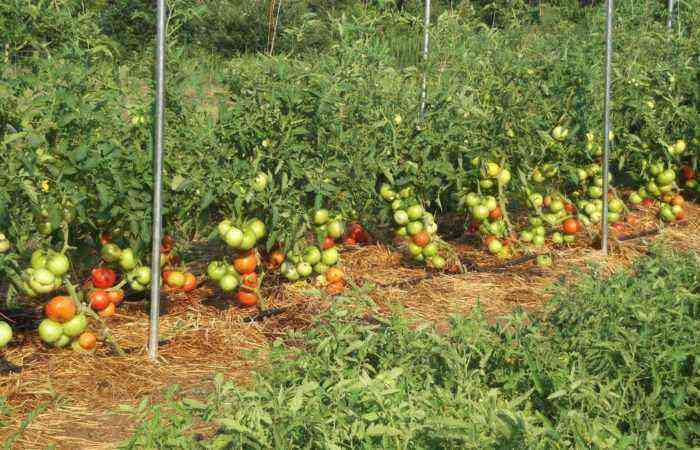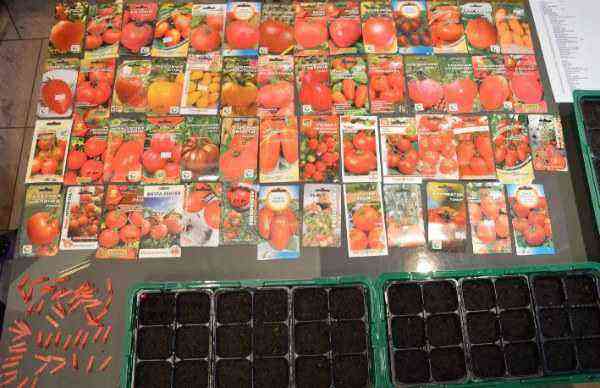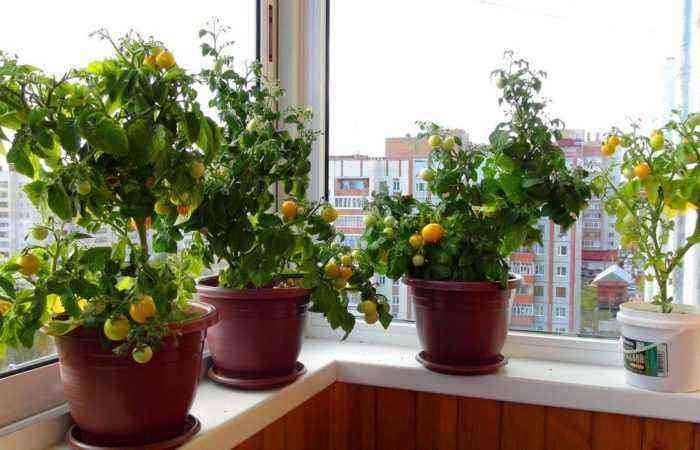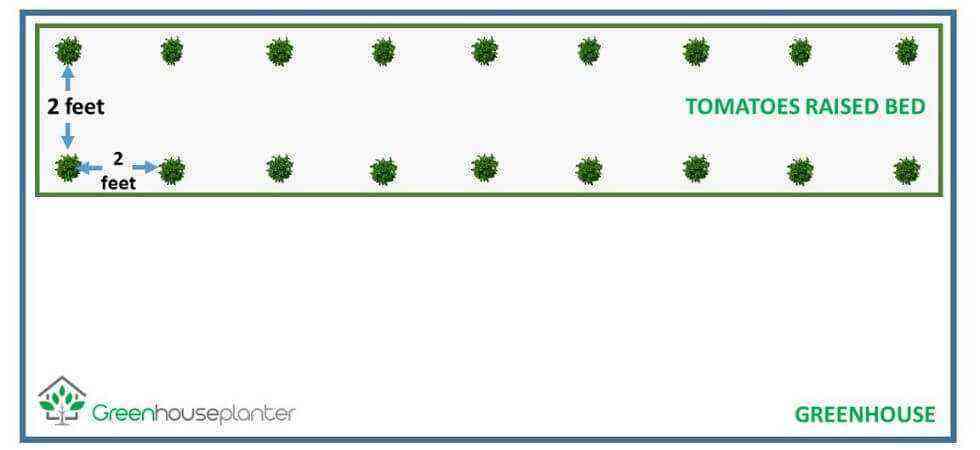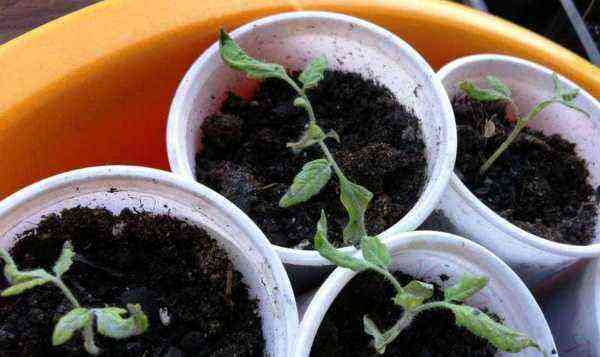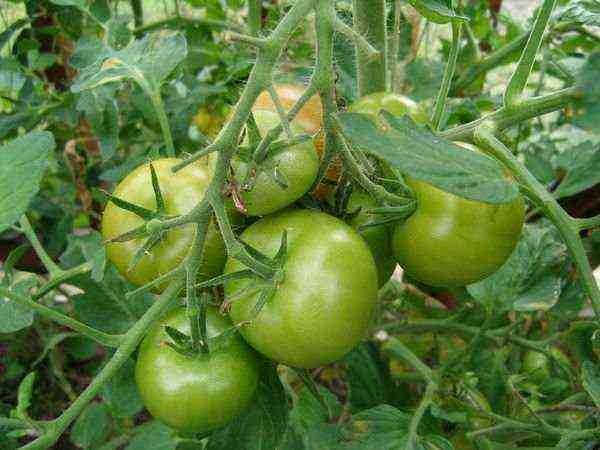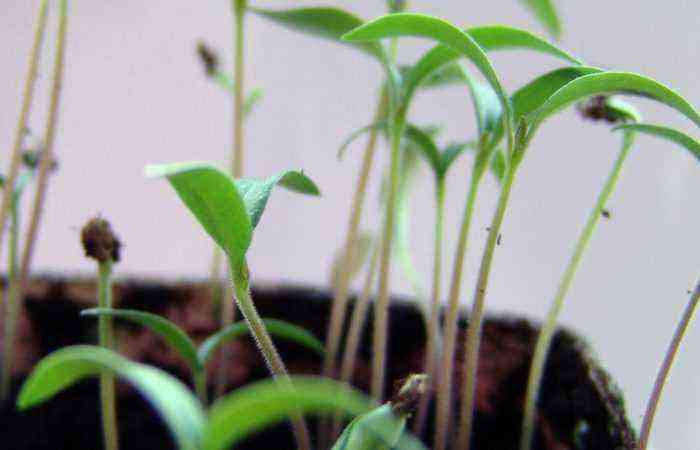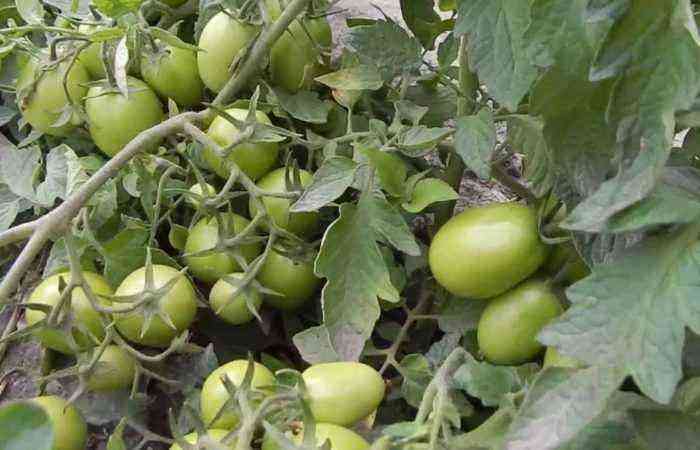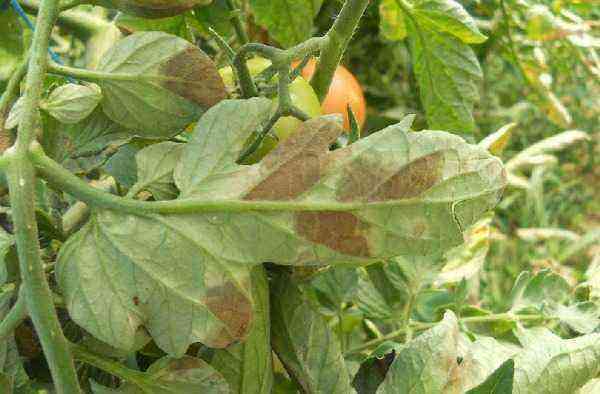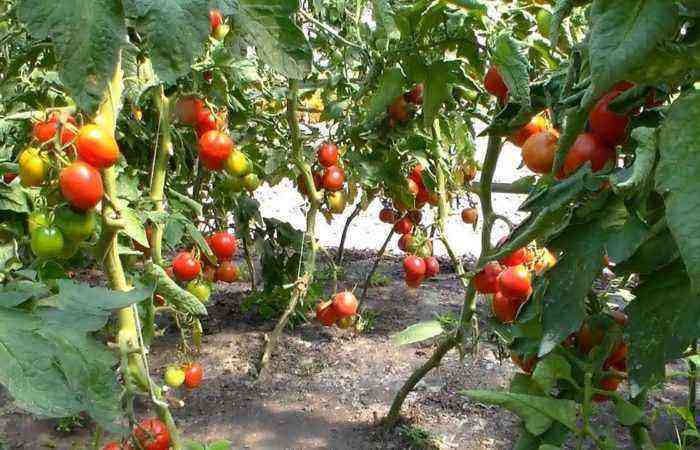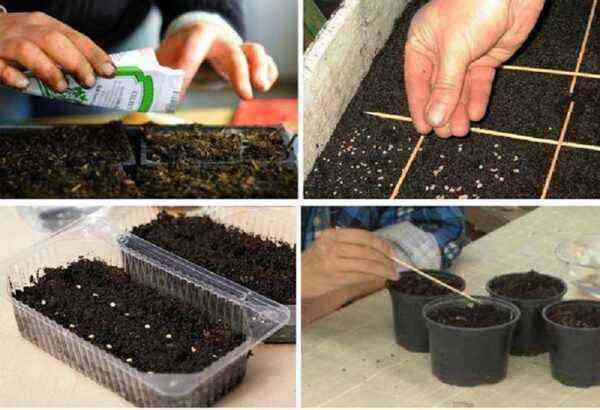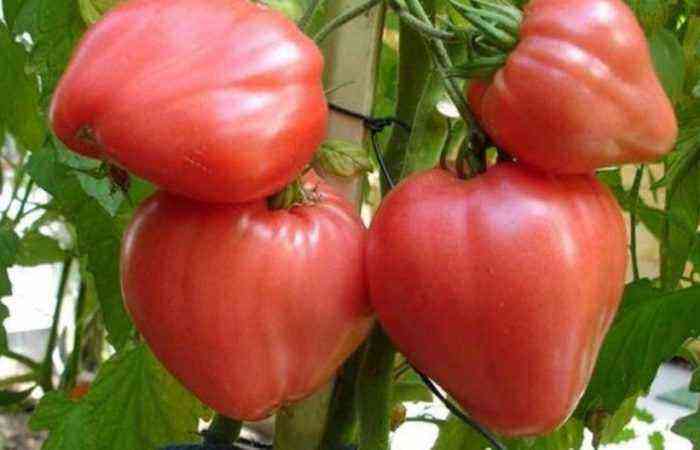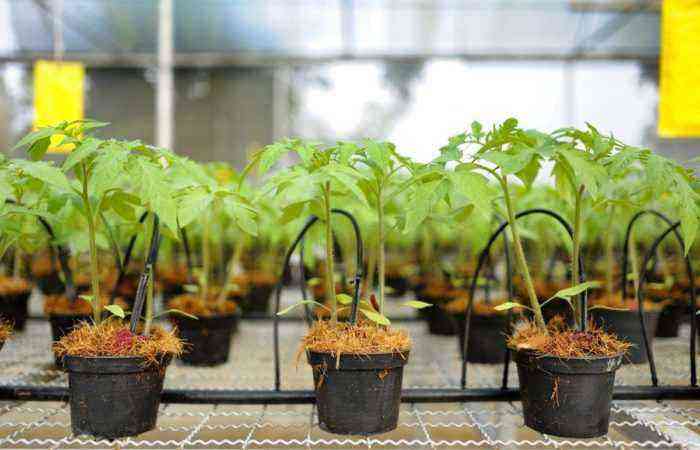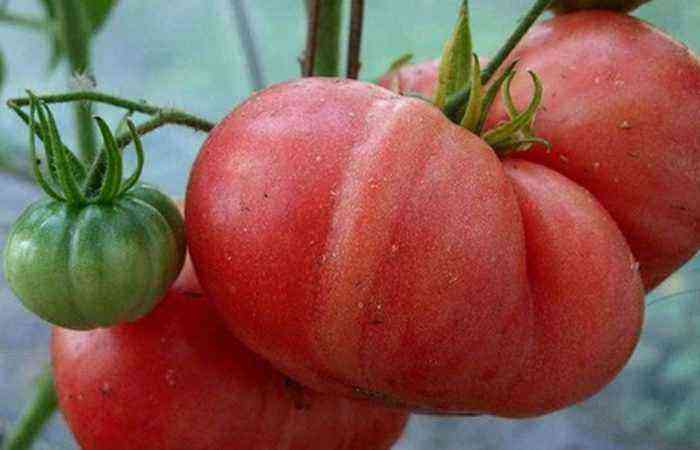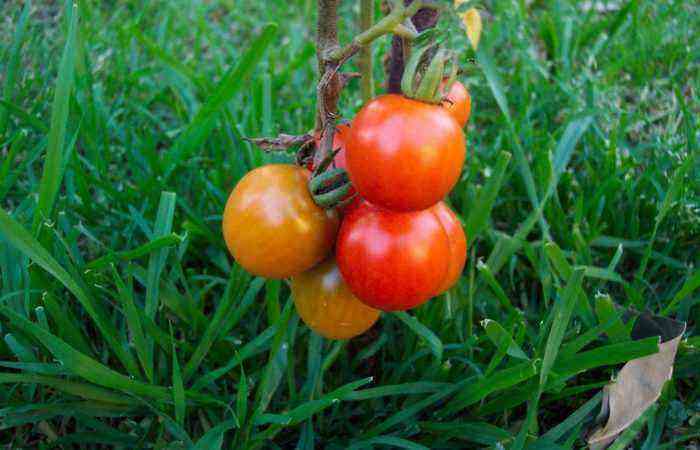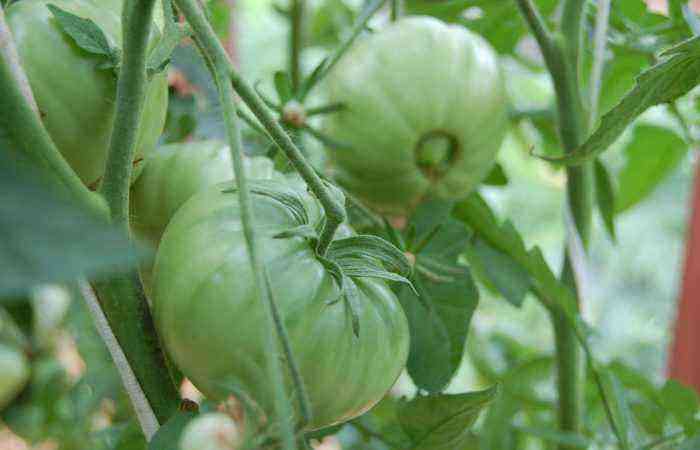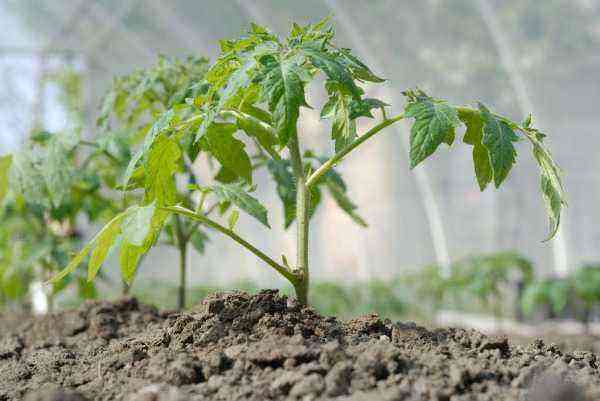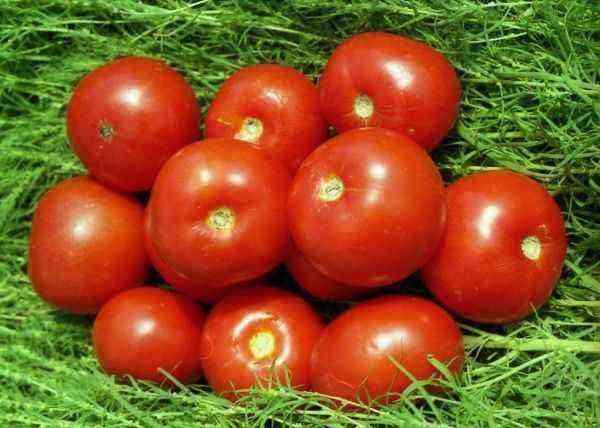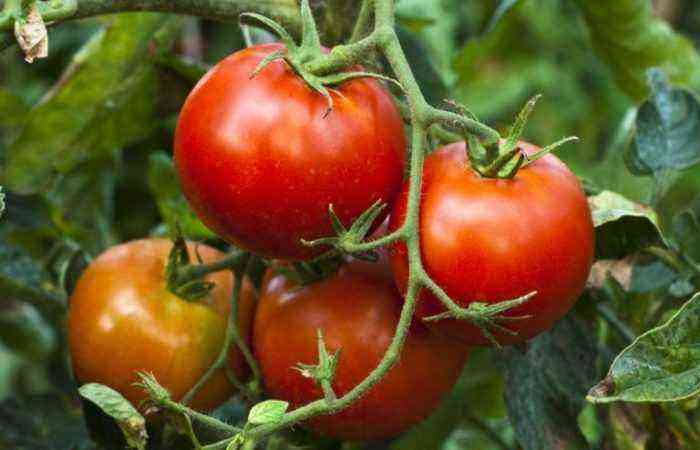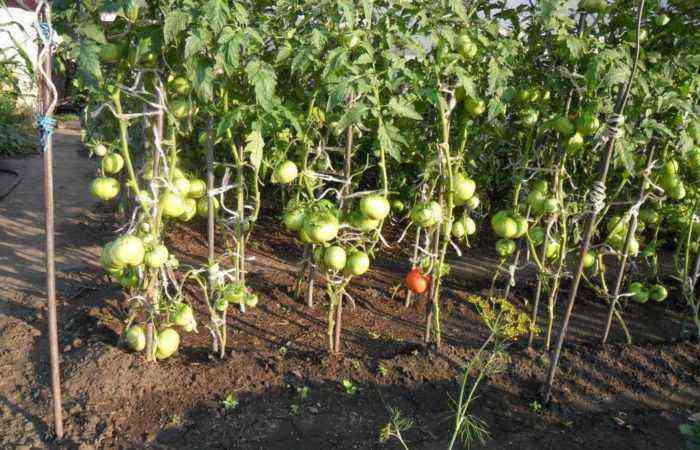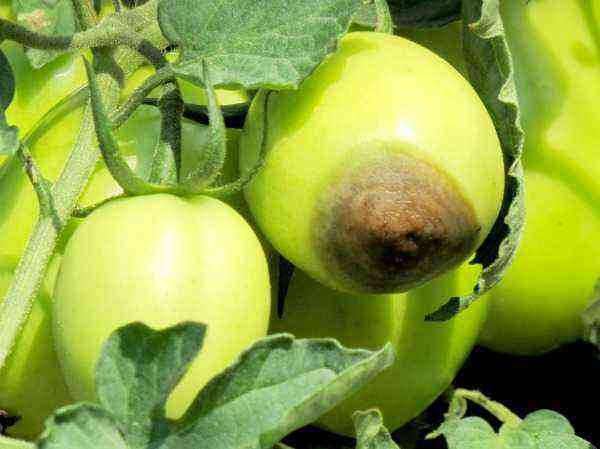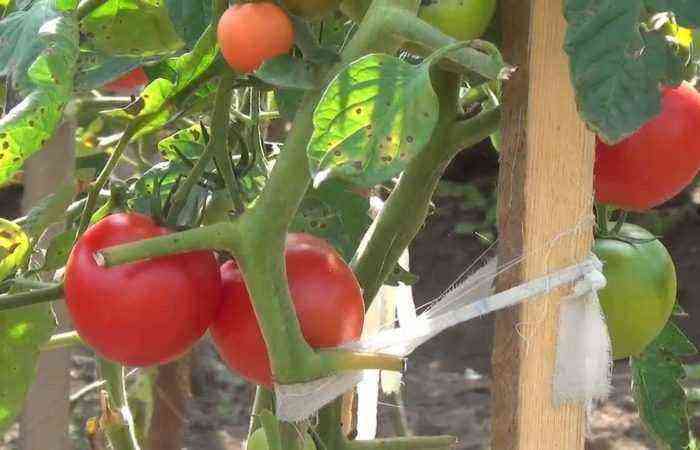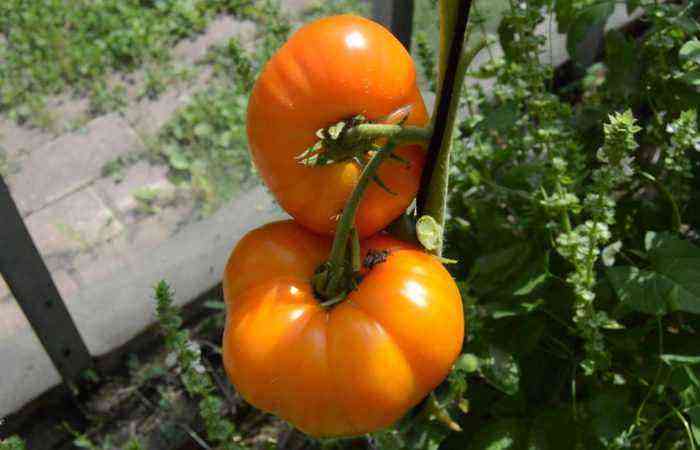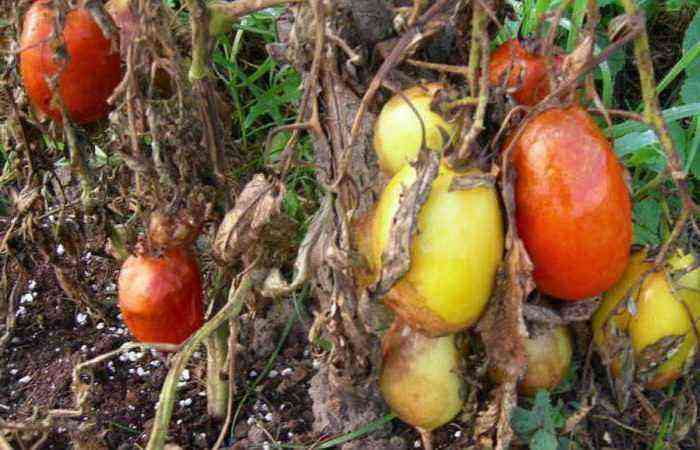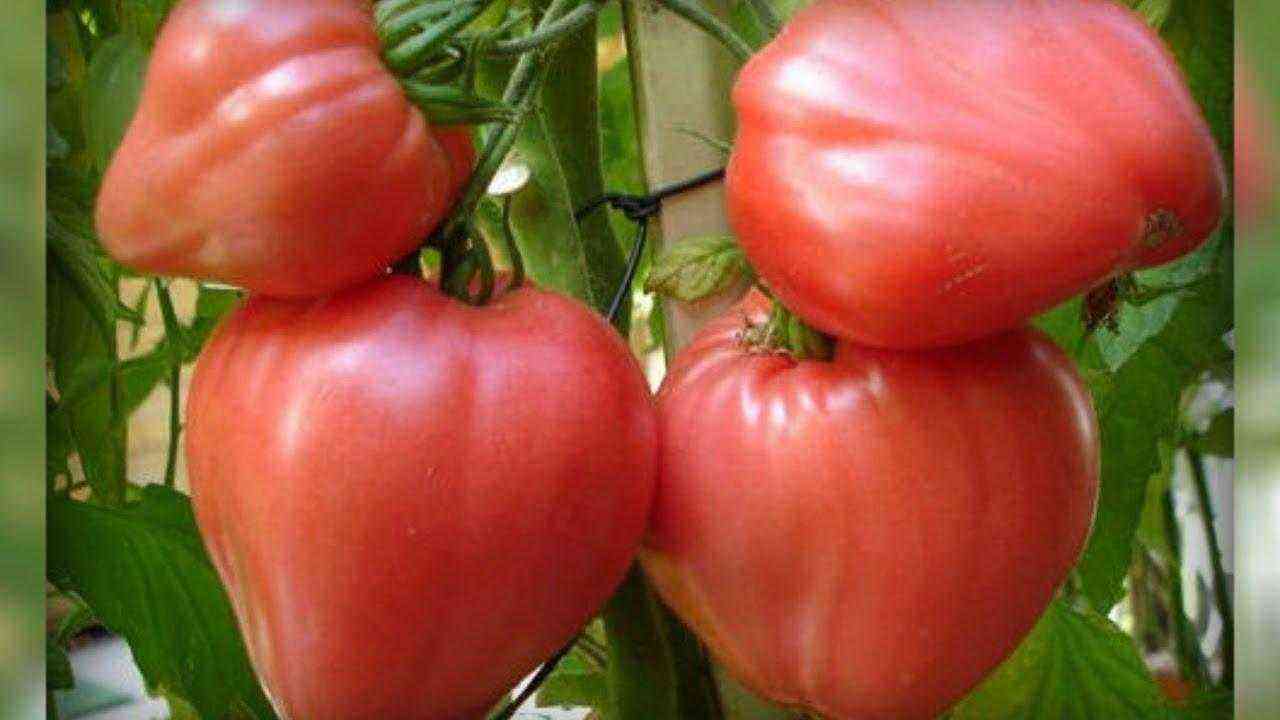Siberian breeders bred the variety in 1995. A few years later, it became widespread throughout the country. Summer residents were attracted by the unique qualities of the tomato: resistance to weather conditions, abundant fruiting even in open ground and disease resistance. Today, the agricultural company “Siberian Garden” is engaged in the sale of seeds.
Appearance of a tomato, its characteristics and description
“Bull forehead” refers to the standard varieties. This means that its bushes are distinguished by a compact root system. The green part is also weakly branched. This feature allows you to plant more plants on the bed. Due to this, the yield increases. The height of the bush reaches one and a half meters. He needs to be pinched.
The plant must be tied up: under the weight of the crop, the branches may break.
According to the description, the variety is medium-early, so the first fruits can be plucked as early as mid-July. As they ripen, the tomatoes turn red. Vegetables have a rich tomato flavor. The pulp is dense, sugary. There is little liquid inside, there are practically no streaks. The thin skin is easy to separate from the pulp.
Tomato belongs to the heavy varieties. The average weight of one fruit is 400 g. With good care, you can harvest a crop weighing 600 g. Particularly large specimens appear at the beginning of fruiting, then the size declines.
Varieties resembling “bull forehead”
If there are no “bull forehead” seeds on the shelves, you can purchase:
- “Grandma’s Secret”
Ripe tomatoes are valued for their bright taste and impressive size. Fruits on a tall bush can reach 600 g. Vegetables are well stored and tolerate transportation. From one bush you can harvest 8 kg of crop.
- Andrew’s Surprise.
The bush grows very well. You have to form it into one stem. The fruits are identical in taste and appearance to the “bull forehead”. The weight of one tomato is 500 g. The crop is harvested in the second half of summer. The plant feels good both in open and closed ground. Renowned for disease resistance. The only drawback is the small amount of fruit on the bush.
- “Wild Rose”.
The variety tolerates hot climates well. In contrast to the “bull forehead”, the fruits are painted pink. The weight of a tomato reaches 350 g. Storage and transportation is not a hassle. Bushes grow quickly, they should be pinched and tied up.
The listed varieties have a salad purpose, they are rarely used in conservation for the winter.
Pros and cons of the variety
The tomato was bred in order to get high yields in the northern regions. “Bull forehead” is not afraid of temperature changes, retains a healthy appearance even in rainy summers. Summer residents note an increased resistance to common tomato ailments: late blight and various types of rot. The number of fruits taken from the bush in the zone of extreme farming is the same as in warm regions. Plants are undemanding to watering.
According to the characteristics, the variety has features that do not suit all gardeners. The shelf life of harvested tomatoes is very short. This is the biggest disadvantage.
In addition, the fruits do not tolerate transportation well. If the season is rainy, then the tomatoes crack due to excess moisture. Ripe vegetables are best consumed immediately or recycled.
Preparation of seedlings
Sowing of seeds is carried out 60 days before planting in the ground. Containers (peat pots or plastic cups) are filled with a wet substrate. A recess is made in it and planting material is immersed. From above, the container is covered with a transparent material (glass or plastic film).
Sprouts appear on the fourth day. They require good light and high humidity to thrive. The substrate with seedlings is moistened with a spray bottle as it dries.
You can completely remove the shelter 14 days after seed germination.
A few weeks before planting in the ground, tomatoes begin to harden. Pots are taken out to the balcony for several hours a day. Seedlings ready for planting reach a height of 30 cm.
Beds
“Bull’s forehead” is planted in open ground when the earth finally warms up. One square meter fits 4 bushes. Superphosphate, a pinch of ash, a little compost are added to the planting hole. Throughout the summer, the culture is regularly weeded and watered. A month after planting, the bushes are tied to an additional support.
In order for the crop to start as quickly as possible, the green mass must be properly formed. Side shoots are removed from tomatoes, leaving one or two stems. If you ignore pinching, plantings will be thickened.
Plants shade each other. Large fruits without pinching a bush should not be expected. Pinching the top is done in August after the formation of the ovaries. Root dressings are applied three times per season. A complex mineral fertilizer should be used.
Greenhouse
Plants in closed ground are planted a month earlier than in the beds. By and large, caring for bushes in a greenhouse differs little from care in the open field. Particular attention is paid to watering and ventilation of the room. Tomatoes do not receive the required amount of moisture, so you need to monitor the condition of the soil. During the warm period, the windows and doors are open all day. This will prevent the appearance of parasites and burns on the leaves.
Diseases and harmful insects
Variety “Bull’s forehead” is resistant to common diseases. In rainy summers, tomatoes are not afraid of late blight, powdery mildew and alternariosis. Preventive spraying is carried out in early summer. “Skor”, “Topaz” and “Ordan” are recognized as effective fungicides.
The list of insects that can harm the crop is small. Most often, bushes are affected by:
- Nightshade miner.
The larvae of the fly eat through the leaf, forming winding passages in it. With a large-scale defeat, the foliage withers, falls off, and the crop comes to naught. During the season, 6 generations develop. Plantings are sprayed with Aktellik or Damylin preparations.
- Spider mite.
A small insect sucks the juice from the foliage and entangles it with cobwebs. Damaged tissues merge into large dark spots. If you do not take action, the bushes may die. The beds are treated with Aktara, Fufanon or Fitoverm.
- Whitefly.
Insect larvae feed on green mass, in addition, they leave a specific plaque on which the fungus multiplies. As a result of such activity, the plant turns black and disappears. The most effective remedy is the insecticide “Confidor”.
Spring preventive treatments play an important role. You can use biological preparations, such as Lepidocide or Bitoxibacillin.
Cookery
Due to its large size and thin skin, Bull’s forehead is rarely salted or pickled. The exception is barrel salting. They make an excellent thick tomato paste. Thanks to its high sugar content, tomato quenches thirst well. You can chop vegetables in a blender, add salt or pepper to taste and enjoy tomato juice.
By its consistency, the variety is best added to summer salads. Its rich smell can stimulate appetite.
“Bull’s forehead” is a unique product of modern breeding. Summer residents from all regions can harvest a large crop from each bush. It remains to be hoped that various agricultural firms will be actively involved in the sale of seeds.
